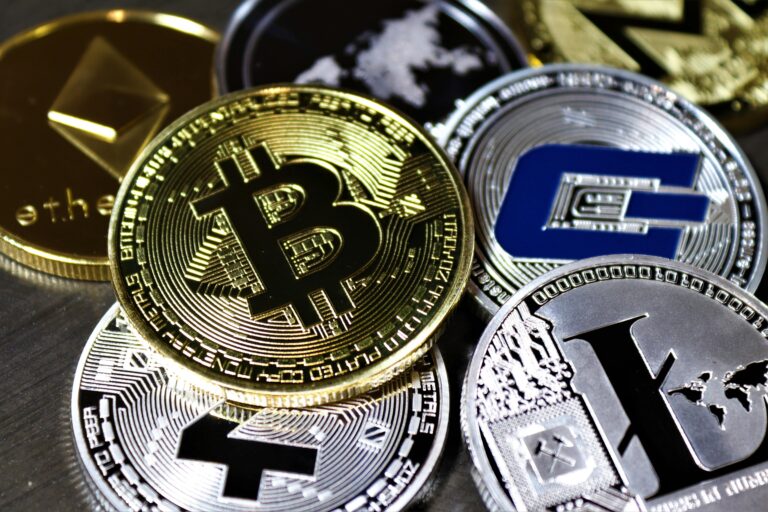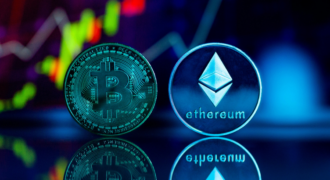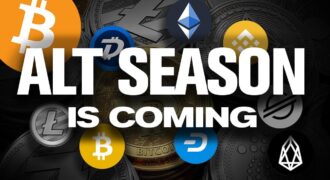The world of cryptocurrencies extends far beyond Bitcoin, and one of the most exciting segments of this digital revolution is the altcoin market. From innovative new projects to game-changing technologies, altcoins continue to capture the attention of investors, developers, and crypto enthusiasts alike. However, with this dynamic market comes a set of complexities that can be overwhelming for both seasoned and novice investors. Staying informed about the latest altcoin developments, market trends, and emerging technologies is crucial for making smart, well-informed investment decisions.
In this article, we will break down the altcoin market, examining the latest project launches, key market shifts, and providing the insights needed to navigate this fast-moving space. Whether you’re a beginner looking to understand the altcoin ecosystem or an experienced investor tracking market movements, this comprehensive breakdown will equip you with the knowledge to stay ahead.
What Are Altcoins and Why Do They Matter?
Altcoins, short for “alternative coins,” refer to all cryptocurrencies other than Bitcoin. While Bitcoin laid the groundwork for the crypto revolution, altcoins have expanded the potential of blockchain technology, introducing a wide variety of use cases, technological innovations, and financial applications. Altcoins range from popular tokens like Ethereum, Ripple (XRP), and Litecoin, to niche, emerging coins focused on specific sectors like DeFi (Decentralized Finance), NFTs (Non-Fungible Tokens), and smart contracts.
Each altcoin brings something unique to the table—whether it’s faster transaction speeds, enhanced security features, scalability solutions, or specialized ecosystems. As blockchain technology evolves, altcoins play an essential role in driving the diversification and innovation of the entire crypto market.
Key Drivers of the Altcoin Market
Understanding the altcoin market requires a look at the key factors influencing its dynamics. Here are some of the most significant drivers:
Technological Innovation
Altcoins often emerge as a solution to the limitations of Bitcoin and existing cryptocurrencies. They focus on improving aspects such as scalability, transaction speed, and security. For instance, Ethereum’s introduction of smart contracts paved the way for decentralized applications (dApps) and decentralized finance (DeFi). Solana, on the other hand, has built its reputation on offering high throughput with low transaction fees, making it a strong contender for decentralized applications and Web3 development.Regulatory Changes
The altcoin market is deeply affected by regulatory news. As governments around the world work on establishing frameworks for digital currencies, changes in regulations can create both challenges and opportunities. For example, the introduction of Central Bank Digital Currencies (CBDCs) by various nations could significantly impact altcoins, either by facilitating greater adoption or by introducing competition from state-backed digital assets.Market Sentiment and Adoption
Just like in any financial market, investor sentiment plays a key role in driving the value of altcoins. Market hype, social media influencers, and community engagement can lead to short-term volatility, while sustained adoption from mainstream institutions and businesses can lead to long-term growth. The NFT boom and the rise of DeFi platforms have injected substantial momentum into the altcoin market, attracting a wider base of users and investors.Partnerships and Collaborations
Strategic partnerships with established companies or other blockchain projects can accelerate the adoption of altcoins. For instance, Polkadot’s collaboration with enterprises to create cross-chain interoperability solutions has helped increase its relevance in the altcoin space. Similarly, Chainlink’s integration with decentralized finance platforms makes it a key player in DeFi ecosystems.Network Upgrades and Hard Forks
Regular updates and upgrades to altcoin networks can provide new features and improvements. Many altcoins are open-source and undergo frequent community-driven upgrades, which can influence their price and performance. For example, Ethereum’s planned transition to Ethereum 2.0, which will shift from a proof-of-work (PoW) to a proof-of-stake (PoS) consensus mechanism, promises to address scalability and energy-efficiency concerns, potentially positioning it as the backbone of decentralized finance for years to come.
New Altcoin Projects Making Waves
The altcoin space is as vibrant as ever, with new projects emerging all the time. Let’s take a closer look at some of the most exciting new altcoin projects and developments that could reshape the market.
Arbitrum (ARB)
Arbitrum is one of the leading Layer-2 solutions designed to scale Ethereum by offering faster, cheaper transactions while still relying on the security of the Ethereum mainnet. As Ethereum continues to grapple with high gas fees, Arbitrum aims to provide a much-needed solution to make Ethereum-based applications more scalable and accessible.Immutable X (IMX)
As the world of NFTs continues to expand, Immutable X has positioned itself as a key player in offering gas-free, carbon-neutral NFT minting and trading. The platform’s Layer-2 scalability solution for NFTs ensures rapid and cost-effective transactions, making it an attractive option for creators and collectors in the space.Terra (LUNA) 2.0
After the collapse of Terra’s algorithmic stablecoin in 2022, the revamped Terra 2.0 project is seeing a resurgence. This new iteration focuses on interoperability and stablecoins, aiming to provide a more secure and scalable alternative to the volatile stablecoin market. With backing from the Terra community and a new governance model, Terra 2.0 could potentially recapture a significant portion of the DeFi market.Sui (SUI)
Sui is a high-performance blockchain focusing on low-latency, scalable applications. It’s designed to support decentralized applications (dApps) and NFTs with a unique Move programming language, which emphasizes safe and efficient smart contract execution. The project’s innovative approach to transactional throughput and scalability positions it as a promising contender to Ethereum’s dominance.Aptos (APT)
Aptos is a Layer-1 blockchain designed for high-speed transactions and scalability, aiming to surpass the performance of other major blockchains like Solana and Ethereum. Its goal is to become a leading platform for dApps, with a focus on high transaction throughput and low latency.
Key Market Changes to Watch
The altcoin market is always in flux, and several key changes could impact the trajectory of altcoins:
The Rise of Layer-2 Solutions
As Ethereum and Bitcoin continue to dominate the market, Layer-2 solutions are becoming increasingly important. These projects seek to improve scalability by processing transactions off the main blockchain, reducing congestion and gas fees. With Ethereum’s transition to Ethereum 2.0, Layer-2 projects such as Arbitrum and Optimism are expected to play a vital role in the ecosystem.Continued Growth of Decentralized Finance (DeFi)
DeFi’s evolution is not slowing down. More DeFi protocols are launching across a variety of altcoins, with a focus on enhancing liquidity, security, and accessibility. The convergence of DeFi and NFTs could also create cross-market synergies, presenting new opportunities for altcoin investors.Increased Institutional Adoption
More traditional financial institutions are exploring ways to incorporate cryptocurrencies and blockchain technology into their portfolios. As institutions turn their attention to altcoins, the liquidity and market depth of altcoins could see a significant boost, making them more attractive to mainstream investors.Environmental Sustainability
As the crypto industry faces growing concerns about energy consumption and carbon footprints, altcoins that embrace energy-efficient consensus mechanisms like proof-of-stake (PoS) will likely gain traction. Projects focused on sustainability and reducing their environmental impact could see increased support from both investors and regulatory bodies.
Conclusion: Navigating the Altcoin Landscape
The altcoin market is full of opportunity and innovation, but it requires careful consideration and due diligence to make the right investment choices. By staying updated on new projects, technological advancements, and market shifts, you can better navigate the complexities of this ever-evolving space.
As the altcoin landscape continues to mature, investors will have to assess projects based on more than just market hype. Understanding the real-world utility, technological strength, and long-term vision of altcoins will be crucial for making well-informed decisions. By breaking down the key factors driving the market—whether it’s new blockchain technologies, regulatory changes, or strategic partnerships—you can stay ahead of the curve and potentially reap the rewards of this rapidly evolving industry.






